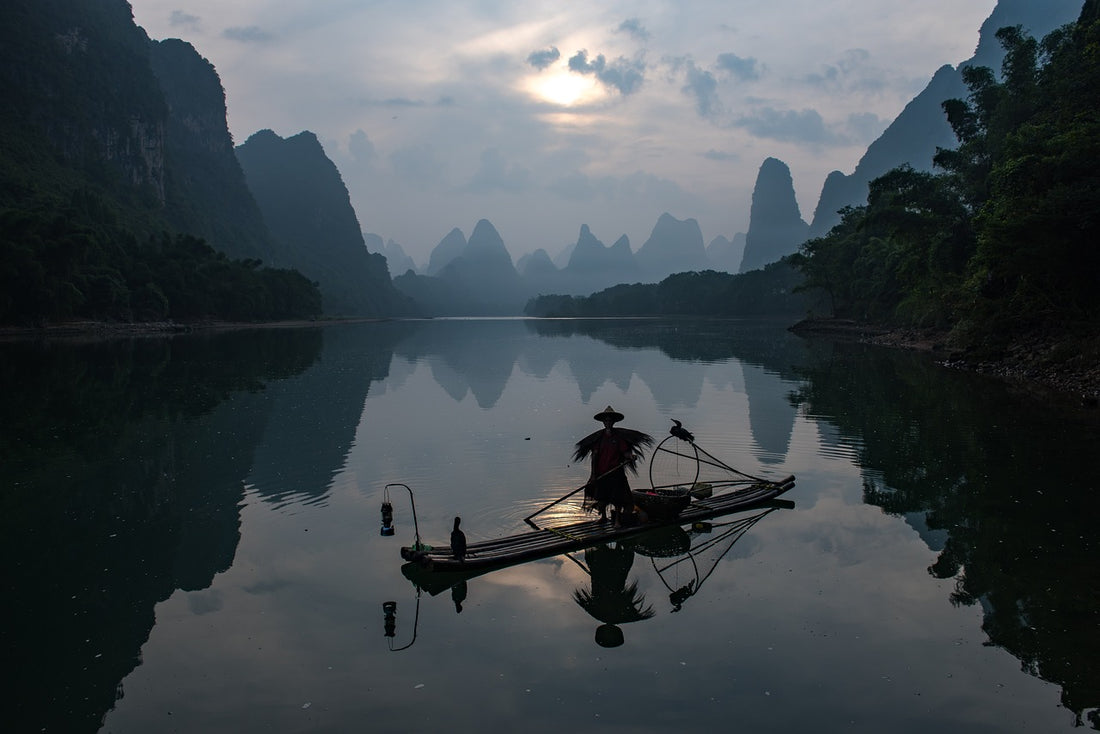
Chinese Landscape Painting: Realistic Scenes of Guilin's Li River and Huangshan
Chinese landscape painting, known as "Shan Shui" (mountain-water) painting, has a long and rich history dating back to the Tang Dynasty. Among the many scenic locations that have inspired generations of artists, Guilin's Li River and Huangshan (Yellow Mountain) stand out as two of the most iconic and frequently depicted real-world landscapes in Chinese art.
The Li River in Guilin, Guangxi Province, is renowned for its breathtaking karst formations and serene waters. The unique topography of the area, with its towering limestone peaks rising dramatically from the river, has been a favorite subject of Chinese painters for centuries. Artists often capture the misty atmosphere of the region, using soft brushstrokes and subtle ink washes to convey the ethereal beauty of the landscape. The winding river, dotted with traditional fishing boats and framed by lush vegetation, provides a perfect composition for vertical scroll paintings.
Huangshan, located in Anhui Province, offers a different but equally inspiring landscape. Known for its granite peaks, ancient pine trees, and sea of clouds, Huangshan has been a source of artistic inspiration since the Ming Dynasty. The mountain's dramatic cliffs and swirling mists have been immortalized in countless paintings, often emphasizing the contrast between the solidity of the rock and the fluidity of the clouds. The famous "Guest-Greeting Pine" and other uniquely shaped trees clinging to the cliffs have become iconic elements in Huangshan-inspired artworks.
Both locations exemplify the Chinese aesthetic principle of "Yi Jing" (artistic conception), where artists seek to capture not just the physical appearance of a scene, but also its spiritual essence. The paintings often incorporate elements of Taoist and Buddhist philosophy, with the mountains representing stability and eternity, and the water symbolizing change and flow. Through these landscapes, Chinese artists express their understanding of the harmony between humanity and nature, a central theme in traditional Chinese culture.
Today, these landscapes continue to inspire contemporary Chinese artists, who blend traditional techniques with modern perspectives. The enduring popularity of Guilin's Li River and Huangshan in Chinese art testifies to their timeless beauty and cultural significance, serving as a bridge between China's artistic past and present.
No comments








0 comments